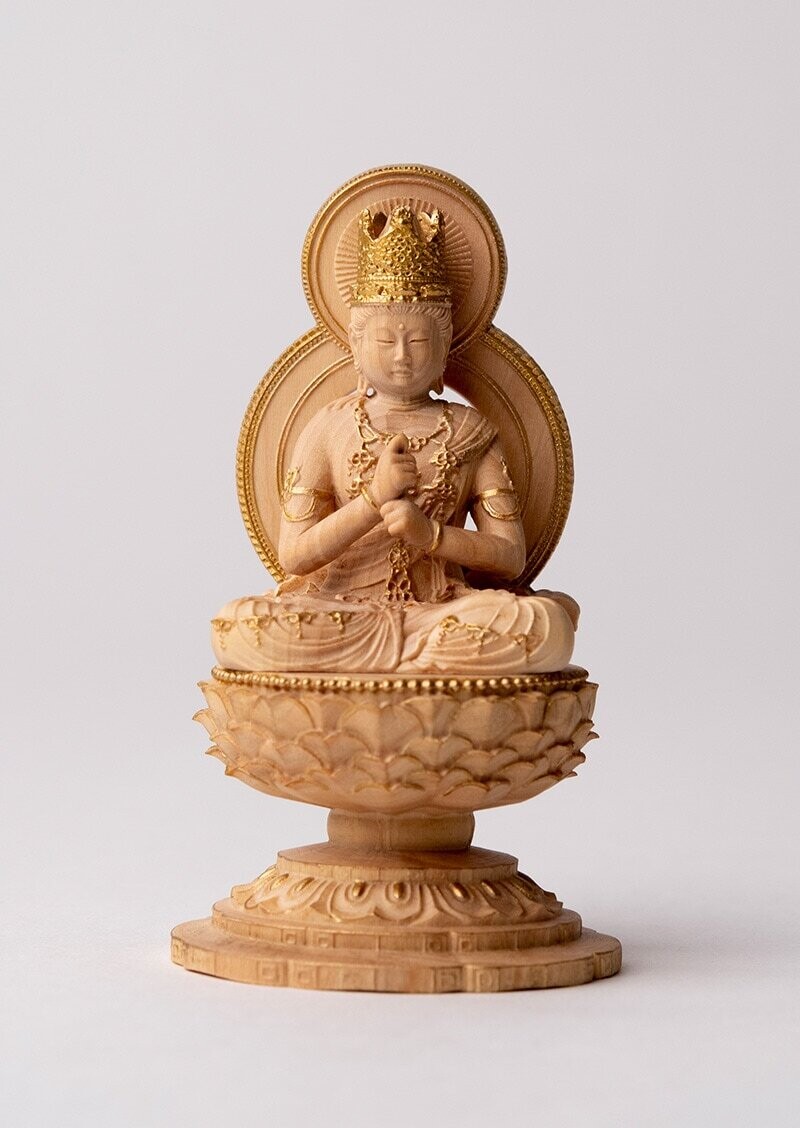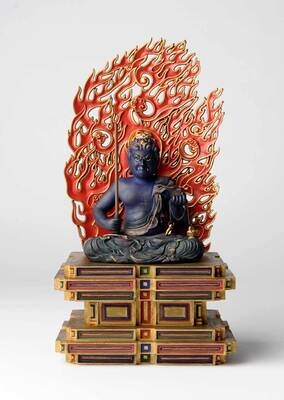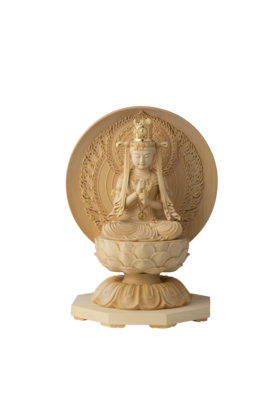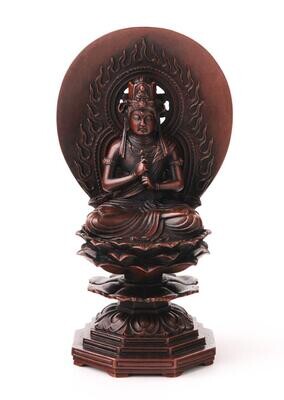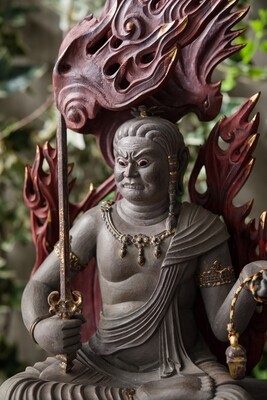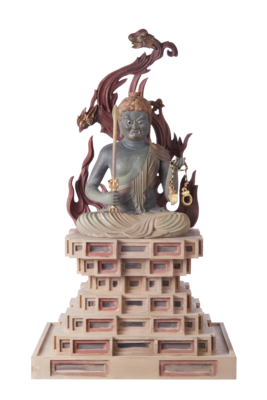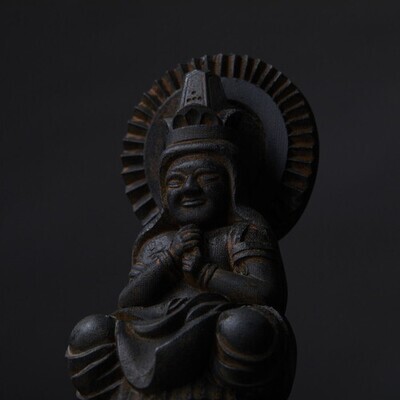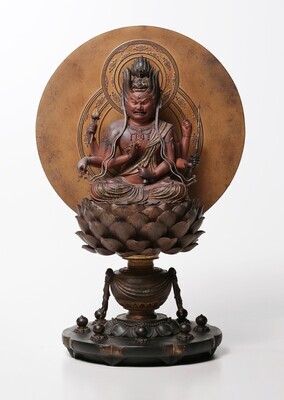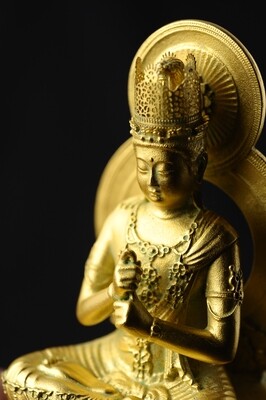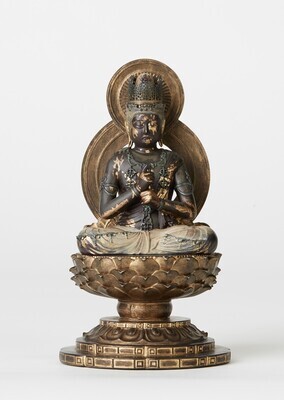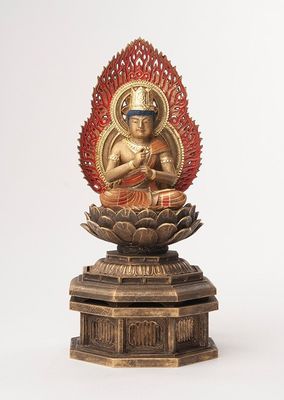Dainichi Nyorai (Mahavairocana) (大日如来 極小仏)
Introducing the "National Treasure Great Vairocana Buddha Seated Statue," renowned as the debut masterpiece of the genius Buddhist sculptor Unkei from the Kamakura period. This exceptional work embodies Unkei's unique allure with its harmoniously sculpted, sensuously textured form and majestic presence. Now, it makes its appearance in the ultra-compact Buddha series, offering enjoyment without limitations due to its diminutive size.
The Great Vairocana Buddha is an absolute presence symbolizing the very truth of the universe in Esoteric Buddhism. All Buddhas, including Shakyamuni Buddha, are regarded as emanations of the Great Vairocana Buddha. The elegant application of refined gold leaf on the statue is supervised by the renowned expert in Buddhist statue coloring, Ms. Chihiro Takamura.
Creating a wooden carving of just around 10 centimeters was a formidable challenge. Utilizing the ideal material of Japanese boxwood for intricate carving, we painstakingly carved the essential facial features and proportions true to the original image. The gilding process was carried out by the Isumu studio under the guidance of Ms. Takamura, packing their expertise into this minute size. This collection confidently stands as a recommendable testament to their expertise distilled into a minuscule scale.
It comes in a special paulownia wood box with a foil-stamped logo of the miniature Buddha. It is also perfect as a gift for someone special.
- Size:H95×W51mm×D51mm 55g
- Material: Tsuge (柘植)
- Made in China
- You can choose the option to consecrate this statue (give an eye-opening ceremony) before it is shipped from Japan. If you choose this option, we will bring the statue to a Japanese temple, and pay them the necessary fees so that your statue is properly consecrated. The temple will issue a certificate of proof with your name on it, which will also be shipped together with your statue
- Shipped globally from Japan by using DHL. DHL is the world-class shipping services provider who makes international delivery a fast, smooth, and hassle-free experience. Delivery time can be faster than when shopping at an e-commerce website in your country, and of course your package will be covered by insurance. You can check the shipping cost for your entire order before you make a purchase
